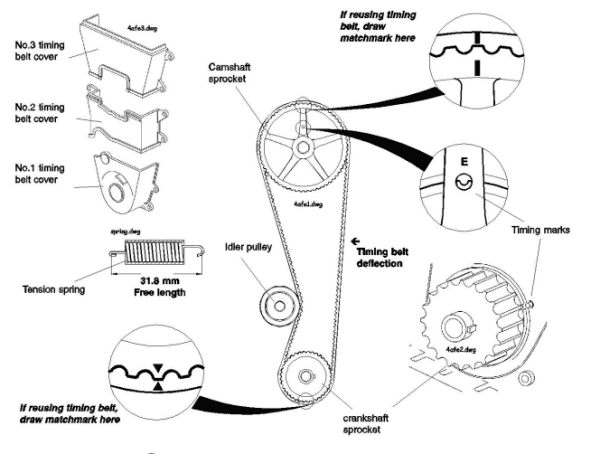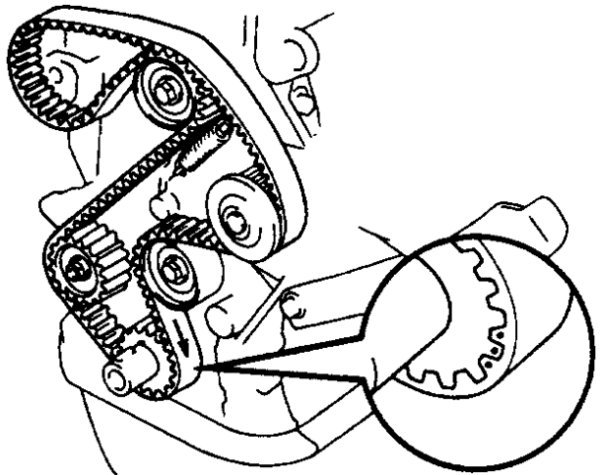Scion FRS timing chain

The Scion FR-S, which shares its platform and engine with the Subaru BRZ and Toyota 86, is equipped with a timing chain, not a timing belt. This is a key feature that contributes to the engine’s long-term durability and reduced maintenance requirements.
🔧 Engine Overview
- Engine Code: FA20 (also known as Subaru’s 2.0L flat-4 “Boxer” engine)
- Configuration: 2.0-liter naturally aspirated, horizontally opposed (flat-four)
- Fuel Delivery: Direct and port injection (Toyota D-4S system)
- Timing Mechanism: Timing Chain
🛠️ What Does a Timing Chain Do?
A timing chain synchronizes the rotation of the crankshaft and camshafts, ensuring that valves open and close at the correct times during each cylinder’s intake and exhaust strokes. In the Scion FR-S, the timing chain runs internally and is lubricated by engine oil, which contributes to its long lifespan.
✅ Advantages of a Timing Chain
- No Regular Replacement Interval
Timing chains are designed to last the life of the engine with proper maintenance. Unlike timing belts (which usually need replacement every 90,000–100,000 miles), the chain usually doesn’t require service unless there’s a problem. - Better Long-Term Durability
Chains are made of metal and are more resistant to stretching and degradation from heat and oil exposure. - More Precise Timing
Chains typically offer better timing precision over long periods, which is critical in high-revving engines like the FA20.
⚠️ Common Timing Chain Issues (If They Occur)
Although designed to be durable, timing chains can develop issues under certain conditions:
- Chain Stretch
Caused by poor oil quality or excessive mileage, leading to poor engine timing and performance loss. - Timing Chain Tensioner Failure
A common failure point that can cause rattling noises on cold starts or even lead to misalignment of timing components. - Low Oil Pressure
Since the tensioner is oil-actuated, low oil pressure can result in slack in the chain, increasing wear and risk of failure.
🔍 Symptoms of Timing Chain Problems
- Rattling noise at startup (especially cold starts)
- Check Engine Light (CEL) for timing-related codes (e.g., P000A, P000B, P0011)
- Poor engine performance
- Misfires
- Metal shavings in the oil
🧰 Maintenance Tips to Extend Timing Chain Life
- Use high-quality engine oil
- Change oil regularly (every 5,000–7,500 miles or as per owner’s manual)
- Monitor oil levels closely—low oil can increase chain and tensioner wear
- Use the correct oil viscosity recommended by the manufacturer
🧠 Final Notes Scion FRS timing chain
- The Scion FR-S’s FA20 engine uses a timing chain, not a belt.
- There’s no need for periodic chain replacement if proper oil changes and maintenance are performed.
- If you hear abnormal engine noises, especially rattling, get the timing chain and tensioners inspected immediately.
Would you like a diagram of the FA20 timing chain setup or a picture of the engine with the chain location marked?
Scion FRS timing chain installation PDF
🔧 Technical Resources
1. Toyota Tech Tip S-TT-0080-14
This official document provides detailed guidance on the removal and installation of the timing chain for the 2013–2016 Scion FR-S. It emphasizes the importance of correctly identifying alignment marks on the Variable Valve Timing (VVT) controllers and crankshaft gear. Proper alignment is crucial to ensure engine performance and prevent potential damage. qualityservicemanual.com
2. Workshop Repair & Service Manual
A comprehensive manual covering service, maintenance, and troubleshooting for the Scion FR-S. It offers in-depth procedures for engine components, including the timing chain system.GT86 and BRZ Drivers Club Forums
🎥 Visual Guides
For a hands-on understanding, consider watching the following video tutorials:
- Complete Timing Chain Replacement: This video provides a step-by-step guide on replacing the timing chain in Toyota/Scion vehicles, offering visual insights into the process. YouTube
- Setting Timing on FA20 Engine: A detailed walkthrough on correctly setting the timing for the FA20 engine, ensuring proper alignment and function.



